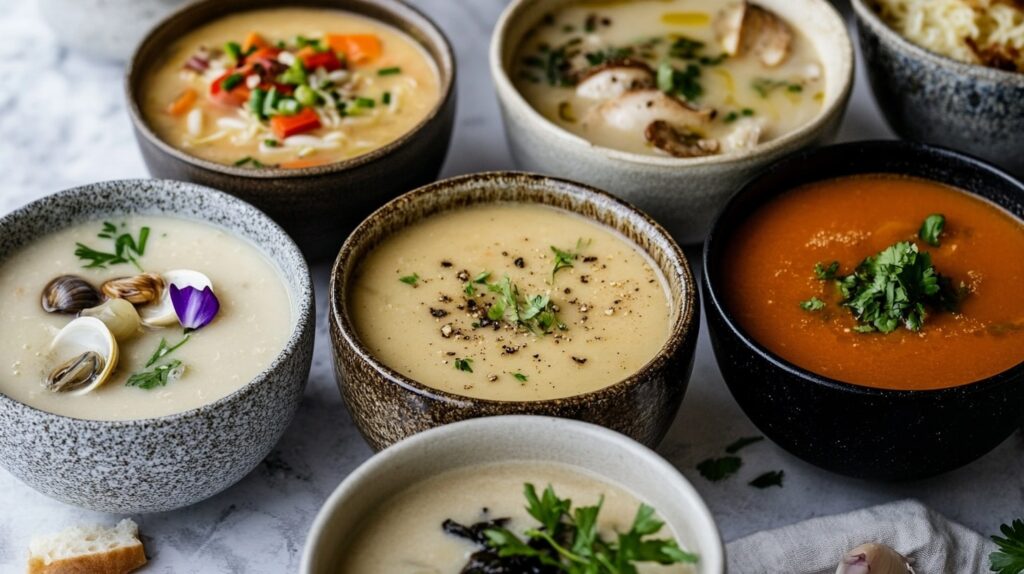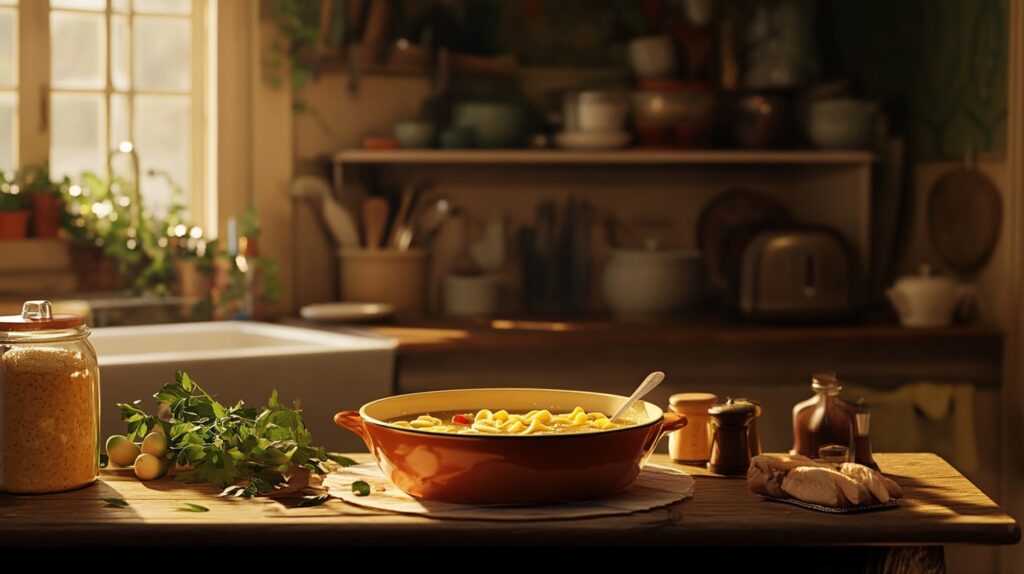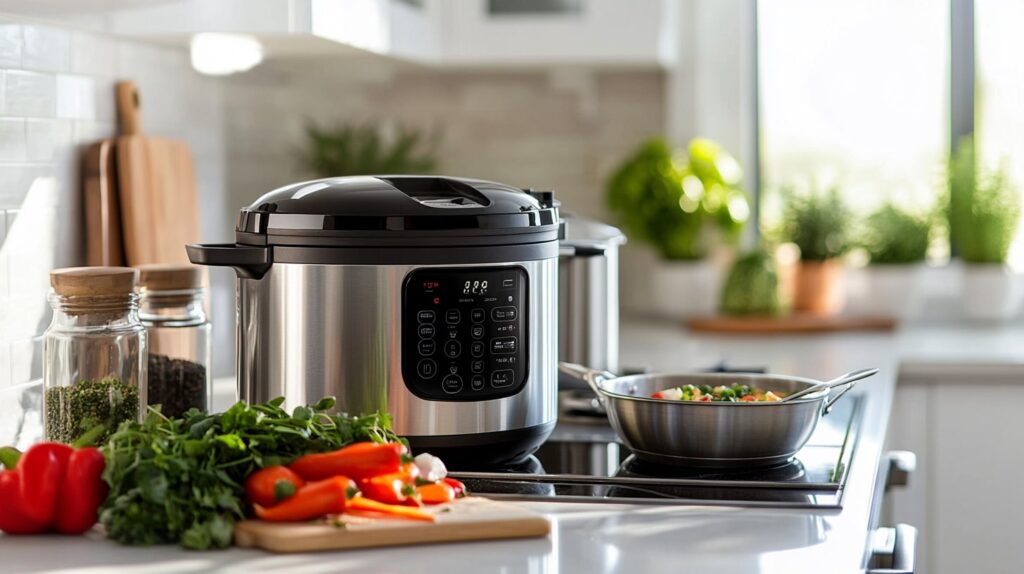What are widely known soups, and why do they hold a special place in cultures around the world? Nothing warms you up like a bowl of soup. Whether it’s a snowy day, a rainy afternoon, or just a regular weeknight dinner, what are widely known soups that bring you comfort and warmth? Have you ever wondered how soups differ around the world? What makes chicken noodle soup a classic in America, or why Pho is the pride of Vietnam?
In this article, we’ll take a deep dive into widely known soups, exploring their history, variations, ingredients, and even some common issues you might face while making them. So, grab a spoon and let’s dive into the delicious world of soups! 🥣
Table of Contents
The Historical Origins of Widely Known Soups

How Ancient Cooking Methods Shaped Widely Known Soups
Did you know that soup is one of the oldest meals known to humans? Our ancestors enjoyed soups thousands of years ago! In fact, the invention of soup goes hand in hand with the discovery of cooking pots.
Imagine this: Early humans were experimenting with boiling water in clay pots or even animal skins stretched over a fire. They would toss in whatever they could find—meat, vegetables, grains—and voila! Soup was born.
The word “soup” comes from the Latin word suppa, meaning “bread soaked in broth.” Early soups were often served with a piece of bread to soak up the flavorful liquid.
The Evolution of Widely Known Soups Through the Middle Ages
During the Middle Ages, soups evolved into more refined dishes. In Europe, they were a staple food because they were easy to make and required minimal ingredients. People often boiled leftover bones, grains, and herbs to create hearty broths.
In France, soups were known as “potages,” and they varied greatly depending on the region.
Ever heard of French onion soup? This iconic dish dates back to the 14th century, where caramelized onions and beef broth provided a satisfying and inexpensive meal for the working class.
Modern Trends and Innovations in Widely Known Soups
Fast forward to today, and soups are more diverse than ever! From ready-to-eat canned soups to gourmet creations served in high-end restaurants, there’s a soup for every taste and occasion.
Modern trends focus on healthier options like gluten-free, vegan, and low-sodium soups. Innovations like the Instant Pot and slow cookers make it easier than ever to prepare soups at home. And with the rise of global cuisine, you can now enjoy flavors from every corner of the world without leaving your kitchen.
Types of Widely Known Soups: A Global Overview

Soups can be classified into several categories based on their consistency, ingredients, and preparation methods. Let’s break down the major types of soups.
The Differences Between Clear and Thick Widely Known Soups
Soups typically fall into one of two main categories: clear soups or thick soups.
- Clear Soups: These are made from transparent broths, often without any thickening agents. Examples include consommé, chicken broth, and vegetable soup.
- Thick Soups: These soups use ingredients like cream, flour, or pureed vegetables to create a richer texture. Think of chowders, bisques, and cream of mushroom soup.
Essential Broths and Consommés in Widely Known Soups Around the World
Broths are the foundation of many clear soups. They’re made by simmering meat, bones, and vegetables in water for several hours. Chicken broth and beef broth are household staples that can be enjoyed on their own or as a base for other soups.
Consommé, on the other hand, is a refined version of broth. It’s clarified using egg whites to remove impurities, resulting in a crystal-clear liquid. Fancy, right? Consommé is often served as an appetizer in fine dining establishments.
Purees, Bisques, and Cream-Based Widely Known Soups: Global Favorites
These soups are all about texture and richness.
- Purees: Made by blending vegetables or legumes until smooth. Examples include lentil soup and split pea soup.
- Bisques: These are luxurious soups often made from shellfish like lobster or crab, with a touch of cream for added decadence.
- Cream-Based Soups: These feature a creamy base made from milk, cream, or a roux (a mixture of flour and butter). Think of classics like cream of broccoli or potato soup.
What Are Widely Known Soups by Region?
Let’s take a culinary journey around the world to explore some of the most beloved soups from different cultures. 🌍
European Classics: French Onion Soup and Italian Minestrone
Europe is a soup lover’s paradise. Here are a few standout examples:
- French Onion Soup: Caramelized onions, beef broth, and a gooey layer of melted cheese on top of toasted bread. It’s comfort food at its finest.
- Italian Minestrone: A hearty vegetable soup made with beans, pasta, and a tomato-based broth. It’s a versatile dish that varies by region.
- Gazpacho (Spain): A chilled tomato soup packed with fresh vegetables, perfect for hot summer days.
📝 “A bowl of French onion soup isn’t just food; it’s a warm hug in a bowl.”
Asian Favorites: Discover Pho, Ramen, and Tom Yum
Asia offers some of the most flavorful and aromatic soups in the world.
- Pho (Vietnam): A fragrant beef or chicken broth served with rice noodles, herbs, and lime. It’s a meal that nourishes both body and soul.
- Ramen (Japan): Rich, savory broth paired with wheat noodles, slices of pork, and a soft-boiled egg. Each region of Japan has its own twist on this classic.
- Tom Yum (Thailand): A spicy and sour soup made with shrimp, lemongrass, lime leaves, and chili. It’s a flavor explosion!
American Classics: Chicken Noodle Soup and Clam Chowder
In the United States, soup is all about comfort and tradition.
- Chicken Noodle Soup: A timeless remedy for cold days and sniffles. It’s made with chicken broth, noodles, carrots, and celery.
- New England Clam Chowder: A creamy soup with clams, potatoes, and onions. Best enjoyed with a side of oyster crackers.
🥣 “Chicken noodle soup isn’t just a dish; it’s a cure for whatever ails you.”
Ingredients That Make Widely Known Soups Stand Out
Great soups rely on great ingredients. Let’s look at what makes some of the world’s most beloved soups truly special.
Common Ingredients and Their Benefits in Widely Known Soups
Here are some ingredients commonly found in soups and their health benefits:
| Ingredient | Benefits |
|---|---|
| Onions | Rich in antioxidants and vitamins. |
| Garlic | Boosts immunity and fights inflammation. |
| Carrots | Packed with beta-carotene and fiber. |
| Celery | High in antioxidants and vitamins. |
| Ginger | Aids digestion and reduces nausea. |
| Bone Broth | Rich in collagen and minerals. |
Seasonal Ingredients for Regional Soups
Seasonality plays a big role in soup-making. Here are some examples of how different regions use seasonal ingredients:
- Spring: Asparagus soup in Europe, featuring fresh, tender asparagus spears.
- Summer: Gazpacho in Spain, made with ripe tomatoes and cucumbers.
- Autumn: Butternut squash soup in the United States, with warm spices like cinnamon and nutmeg.
- Winter: Hot and hearty soups like Pho in Vietnam or lentil soup in the Middle East.
The Role of Soups in Different Cultures
Soups aren’t just about nourishment—they carry deep cultural significance, too. Across the world, soups are woven into traditions, healing practices, and celebrations. Let’s explore how different cultures use soups in unique ways.
Widely Known Soups as Comfort Food

Think about the last time you felt under the weather or just needed a pick-me-up. What did you crave? For many, the answer is a warm bowl of soup. Why is that?
Soup has a magical way of making us feel better, both physically and emotionally. It’s no wonder chicken noodle soup is dubbed “the world’s cure-all”. But this phenomenon isn’t exclusive to the U.S.—every culture has its own version of a comfort soup:
- Jewish Culture: Matzo Ball Soup is often served during Passover and is known as “Jewish Penicillin” for its healing properties.
- Chinese Culture: A simple Ginger and Chicken Soup is commonly given to those recovering from illness.
- Russian Culture: Borscht, a beet-based soup, is a beloved staple that provides warmth during cold winters.
🥣 “Soup is like a warm embrace on a cold day, no matter where you are in the world.”
Medicinal and Health-Boosting Soups
Did you know that soups have been used for centuries as natural remedies? The combination of hot liquid, nutritious ingredients, and herbs makes soup a powerhouse for boosting health.
Popular Healing Soups:
- Chicken Soup: Contains cysteine, an amino acid that helps clear congestion.
- Bone Broth: Rich in collagen, which supports joint health and strengthens the immune system.
- Tom Yum Soup: Packed with lemongrass, lime, and chili, this Thai soup is known for its antiviral properties.
Soups in Religious and Festive Traditions
Soup plays a key role in many religious and festive traditions. For example:
- Ramadan: In Middle Eastern countries, Harira—a hearty soup with chickpeas and lentils—is commonly enjoyed to break the fast.
- Chinese New Year: Families often serve Nian Gao Tang (sweet rice cake soup) for good fortune and prosperity.
- Christmas Eve in Poland: A beet soup called Barszcz is traditionally served during the festive feast.
Soups not only nourish the body but also bring families together and preserve cultural heritage.
Common Problems When Making Widely Known Soups and Solutions
We’ve all faced soup disasters at some point. Maybe your soup turned out too salty, or it just tasted bland. Don’t worry! Here are some common problems and easy fixes to rescue your pot of soup. 🛠️
Problem: Soup Is Too Salty
Oops! Did you accidentally sprinkle in too much salt? Don’t panic—there are ways to save your soup.
Solutions:
- Add a Potato: Drop a peeled, raw potato into the soup and simmer for 15 minutes. The potato will absorb some of the excess salt.
- Dilute with Water or Broth: Add a little more water or unsalted broth to balance the saltiness.
- Add Acid: A splash of lemon juice or vinegar can help cut through the salt.
Problem: Soup Lacks Flavor
If your soup tastes bland, it probably needs a flavor boost.
Solutions:
- Add Herbs and Spices: Fresh herbs like parsley, thyme, or cilantro can add brightness. Spices like cumin, paprika, or black pepper can add warmth.
- Use Acid: A squeeze of lemon or a dash of vinegar can lift the flavors.
- Finish with Fat: A pat of butter or a drizzle of olive oil can enhance the richness.
📝 “When in doubt, a sprinkle of herbs and a squeeze of lemon can work wonders!”
Problem: Soup Is Too Watery or Too Thick
Getting the texture just right can be tricky, but it’s easy to fix.
If the Soup Is Too Watery:
- Simmer Longer: Let the soup cook uncovered to allow excess liquid to evaporate.
- Add a Thickening Agent: Stir in a slurry (a mix of flour/cornstarch and water) or blend a portion of the soup to thicken it.
If the Soup Is Too Thick:
- Add More Liquid: Pour in a bit of water, broth, or milk to thin it out.
- Adjust Seasoning: After diluting, make sure to taste and adjust the seasonings.
Nutritional Value of Popular Soups
Soups are not just tasty; they can also be incredibly nutritious. Let’s take a look at the nutritional value of some widely known soups and why they’re good for you.
Health Benefits of Broth-Based Soups
Broth-based soups, like chicken noodle soup or vegetable broth, are typically low in calories but high in nutrients.
| Soup Type | Calories | Key Nutrients | Health Benefits |
|---|---|---|---|
| Chicken Broth | 70 per cup | Protein, B vitamins | Boosts immunity, aids digestion |
| Vegetable Soup | 90 per cup | Fiber, vitamins A & C | Supports heart health, promotes fullness |
| Miso Soup | 40 per cup | Probiotics, antioxidants | Supports gut health, reduces inflammation |
Cream-Based Soups and How to Make Them Healthier
Cream-based soups are rich and satisfying, but they can be high in calories and fat. Here are some ways to lighten them up:
- Swap Cream for Milk: Use low-fat milk or unsweetened almond milk instead of heavy cream.
- Use Pureed Vegetables: Blend cooked cauliflower or potatoes to create a creamy texture without added fat.
- Add Greek Yogurt: Stir in a spoonful of Greek yogurt for creaminess and protein.
Nutrition Comparison Table
| Soup | Traditional Calories | Lightened-Up Version |
|---|---|---|
| Clam Chowder | 250 per cup | 150 per cup |
| Cream of Broccoli | 220 per cup | 130 per cup |
| Potato Soup | 300 per cup | 180 per cup |
🥦 “Healthy soups can be just as creamy and satisfying—your waistline will thank you!”
The Best Cooking Techniques for Widely Known Soups

Perfecting your soup game means knowing the best cooking techniques. Let’s break down some methods that can take your soup from ordinary to extraordinary.
Boiling, Simmering, and Stewing Widely Known Soups
- Boiling: Great for making quick broths or blanching vegetables. But be careful—boiling can make meat tough.
- Simmering: The go-to technique for most soups. It allows flavors to meld without overcooking the ingredients.
- Stewing: Similar to simmering but done for a longer time. This technique is ideal for tougher cuts of meat or thick soups.
Using Pressure Cookers and Slow Cookers
- Pressure Cookers: Want soup in a hurry? A pressure cooker can make a flavorful broth in just 30 minutes. Perfect for busy weeknights!
- Slow Cookers: If you love the idea of coming home to a ready-made meal, slow cookers are your best friend. Throw in the ingredients in the morning and let the magic happen while you’re at work.
Pairing Widely Known Soups with Sides and Accompaniments
Soup is fantastic on its own, but pairing it with the right side can turn a simple meal into a satisfying feast. Let’s explore some classic and creative accompaniments that can complement your favorite soups. 🥖🥗
Bread, Crackers, and Dumplings
Bread and soup are a match made in culinary heaven. The combination of crunchy, chewy, or fluffy bread with a hot bowl of soup is comforting and satisfying.
- Crusty Breads: French baguettes, sourdough, or ciabatta are perfect for dipping into thick soups like clam chowder or French onion soup.
- Soft Rolls: Dinner rolls, brioche, or potato rolls pair beautifully with lighter soups such as chicken noodle or vegetable broth.
- Crackers: Saltines work wonderfully with tomato soup, while oyster crackers are a classic choice for clam chowder.
- Dumplings: In dishes like chicken and dumpling soup, these fluffy pillows of dough add both heartiness and texture.
🥖 “Dipping a piece of crusty bread into a bowl of hot soup is one of life’s simple pleasures.”
Salad Pairings for Balanced Meals
For a lighter, balanced meal, consider pairing your soup with a fresh salad. The combination of warm soup and crisp greens creates a delightful contrast in both texture and flavor.
For example, a tomato soup pairs perfectly with a grilled cheese sandwich and a simple mixed salad with vinaigrette. If you’re serving minestrone, try a classic Caesar salad complete with parmesan and croutons. Meanwhile, a bowl of Pho benefits from a side of fresh herbs and bean sprouts to enhance its aromatic broth.
| Soup | Perfect Salad Pairing |
|---|---|
| Tomato Soup | Mixed greens with vinaigrette |
| Minestrone | Caesar salad with parmesan |
| Chicken Noodle | Cobb salad with avocado |
| Pho | Fresh herb and bean sprout salad |
Popular Soup Recipes from Around the World
Ready to try making some of the world’s most beloved soups at home? Here are three classic recipes that are not only delicious but also easy to prepare! 🌍🥣
French Onion Soup Recipe
Ingredients:
- 4 large onions, thinly sliced
- 4 tablespoons butter
- 1 tablespoon flour
- 6 cups beef broth
- 1 cup white wine
- Salt and pepper to taste
- 4 slices of French bread
- 1 cup grated Gruyère cheese
Instructions:
- In a large pot, melt butter over medium heat. Add onions and cook until caramelized (about 25 minutes).
- Stir in flour and cook for 1-2 minutes to eliminate the raw taste.
- Pour in the beef broth and white wine. Bring to a boil, then reduce the heat and let it simmer for 20 minutes. Season with salt and pepper.
- Pour the soup into oven-safe bowls. Top each with a slice of bread and a generous sprinkle of cheese.
- Broil until the cheese is bubbly and golden. Serve hot!
Vietnamese Pho Recipe
Ingredients:
- 1 lb beef bones
- 1 lb beef brisket
- 1 onion, halved
- 4-inch piece of ginger, sliced
- 4 star anise
- 2 cinnamon sticks
- 4 cloves
- 8 cups water
- 8 oz rice noodles
- Fresh herbs (cilantro, mint, basil)
- Lime wedges, bean sprouts, and chili peppers
Instructions:
- First, roast the beef bones, brisket, onion, and ginger in the oven at 400°F for 30 minutes.
- Next, transfer everything to a pot with water, star anise, cinnamon, and cloves. Simmer for 3-4 hours, then strain the broth.
- Cook the rice noodles according to the package instructions.
- Assemble bowls by placing noodles and sliced brisket inside, then ladle the hot broth over them. Garnish with fresh herbs, lime, and chili peppers.
New England Clam Chowder Recipe
Ingredients:
- 4 slices bacon, chopped
- 1 onion, diced
- 3 potatoes, peeled and cubed
- 2 cups clam juice
- 1 cup heavy cream
- 1 lb canned clams, drained
- Salt and pepper to taste
Instructions:
- First, cook the bacon in a pot until it’s crispy. Remove and set aside.
- In the same pot, sauté onions in the bacon fat until soft.
- Add the potatoes and clam juice. Simmer until the potatoes are tender (about 15 minutes).
- Stir in the clams and heavy cream. Season with salt and pepper, then simmer for 5 more minutes.
- Serve the chowder topped with crispy bacon and oyster crackers.
📝 “Making these soups at home brings a taste of the world’s best kitchens right to your table.”
The Future of Soup Trends
As the culinary world evolves, so does soup. What does the future hold for our favorite comfort food? Let’s explore some exciting soup trends that are shaping the way we eat.
Plant-Based and Vegan Soups
With more people embracing plant-based diets, vegan soups are becoming incredibly popular. These soups are not only healthier but also more sustainable.
For example, instead of traditional cream-based soups, you can enjoy a vegan cream of mushroom soup made with coconut milk. Another great option is roasted red pepper soup, which uses pureed vegetables for its creamy texture. If you want a protein boost, a bowl of lentil and spinach soup is satisfying and nutritious.
Sustainability and Zero-Waste Soups
Zero-waste cooking is another growing trend, and soups are perfect for reducing food waste. Instead of tossing vegetable peels, herb stems, or chicken bones, why not turn them into homemade broth? This way, you’re not only being eco-friendly but also making the most of every ingredient.
🌿 “Turn your kitchen scraps into liquid gold by making homemade broths!”
Common Questions About Widely Known Soups
Which Soup Is the Most Popular Globally?
While preferences vary by region, Chicken Noodle Soup and Pho are among the top contenders worldwide. Both soups are loved for their ability to provide warmth, comfort, and a universal sense of satisfaction.
How Can I Enhance the Flavor of My Soup?
To elevate your soup’s flavor, consider incorporating fresh herbs, a splash of acidity (like lemon juice or vinegar), or a pinch of salt. Additionally, finishing with a drizzle of olive oil or a sprinkle of cheese can add richness and depth.
What Types of Soup Are the Healthiest?
Soups based on broth and loaded with vegetables, such as Minestrone or Tom Yum, are typically the healthiest choices. These options are low in calories yet packed with essential nutrients.
Is It Possible to Freeze All Kinds of Soup?
Most soups, particularly broths and purees, freeze well. However, cream-based soups may separate after thawing. If that happens, give them a good stir when reheating to restore their consistency.
How Is Soup Used in Different Cultures?
Soup serves various purposes depending on the culture. In Asia, it’s commonly enjoyed as a breakfast dish, like Pho. In Europe, soups are often served as a starter course. Meanwhile, in the United States, they’re frequently chosen for comfort and quick meals.
What Spices Work Best for Enhancing Soup?
For adding depth to your soup, common spices include black pepper, cumin, paprika, and bay leaves. Fresh herbs such as parsley, thyme, and basil also contribute brightness and flavor.
Explore More Delicious Recipes and Tips
Love exploring soups from around the world? There’s more culinary inspiration waiting for you! Check out these related recipes and guides to expand your cooking skills and satisfy your cravings:
- Looking for a comforting classic? Try our guide to The Ultimate Chicken Dumpling Soup Recipe for a warm, hearty meal. 🥣
- Curious about unique African flavors? Discover the rich, traditional Egusi Soup, a timeless dish packed with flavor.
- Want to perfect your soup bases? Learn Everything You Need to Know About Soup Bones and create the most flavorful broths.
- Explore more exciting comfort food ideas with Why Do We Love Thick Hot and Sour Soup? and find out what makes this classic irresistible.
Conclusion
From the ancient origins of soup to the modern, innovative flavors we enjoy today, soups truly are a global culinary treasure. Whether you’re slurping down a bowl of Vietnamese Pho, savoring French Onion Soup, or whipping up a classic Chicken Noodle, soup remains a timeless comfort food.
Next time you’re in the kitchen, try experimenting with these recipes, pairings, and tips to create your own bowl of deliciousness. After all, soup isn’t just food—it’s a warm, nourishing experience. 🥣💕
